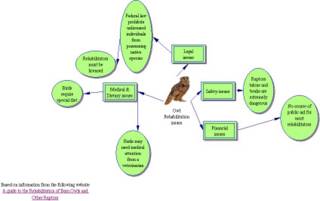What were the strengths and weaknesses of the project?
Well, as my friend Diane says, “You can teach a monkey to do research.” So, the amount of information I found, while prodigious, isn’t really a strength. The fact that it was an enjoyable experience was a definite plus. Naturally, having fewer other things to do in my life would have made it even more fun, but that’s a luxury I couldn’t afford. I especially liked having the email contacts to engage in question and answer sessions. It’s great to have someone right there or virtually right there who can answer a question as soon as it arises.
Another big strength was becoming more aware of my own process in terms of inquiry. It’s interesting to me that I know myself much better as an artist than as a student. Going through artist’s block certainly made me totally aware of what I needed to do in order to be creative. The process is also very similar. I know that I need to have a fallow period --that sort of watching, wondering and webbing period where I spend time in art galleries, look through my art books, take myself off to an interesting shop or museum and just let images swirl around in my head. Then I have a wiggling and weaving time when I’m actually in the studio pulling fabrics, making drawings, listening to music, starting to develop new work.
Weaving is moving things around on the design wall-- a sort of Jamie McKenzie-esque “sorting and sifting” time. Sewing things together and quilting come next. Wrapping is finishing up the quilt and waving is having a show or entering the quilt in a competition. Wishing goes on every time I look at an old piece—I shouldn’t have used that color, that image could have been stronger, workmanship could have been more perfect, and so on.
By spending time during this project thinking about my thinking, I realize that much of my process as an artist came from my student research process. I know that I spend a great deal of time reading about subjects that interest me, viewing videos and films about the topic if they’re available, forming questions, looking for more information, making lists, diagrams or drawings, but hardly ever discussing my work with anyone else. I think it’s because I’m more comfortable writing things out or just having them swirl around in my head. I am not confident that I can express myself very well verbally. (How interesting that my first career was as an actress! All I had to do was memorize someone else’s words rather than supply my own. And I hated improvisation for exactly that reason!)
So not seriously discussing my project with anyone would definitely be a weakness. Questioning is also an area in which I really only scratched the surface. I could have cycled back through the beginning steps, as Jamie McKenzie says, to revise my questions more times than I did.
What would I do differently?
In future, I will try to discuss projects with someone who could provide another insight or help me through a tough area. I also want to focus much more on questioning the next time so as to avoid the “information gathering shopping trip” that McKenzie talks about. I definitely have a tendency to be an impulse information gatherer.
Curriculum Connection
Early in my postings, I discussed the specific fifth grade standards that could be satisfied by the owl inquiry project specifically. I’ve also mentioned throughout my blog that the 7th grade language arts teachers and I have been discussing a yearlong personal inquiry project for students. One of the teachers wanted her students to pick a topic before they began the project. I think that the students should spend the first two months “watching”--reading lots of different books, magazines, newspapers—and doing lots of writing about what interests them about the things they are reading and what else they are curious about. After that time, they could settle on a topic area and begin to generate questions. This project will satisfy several 7th grade language arts standards that Daniel Callison outlined in Key Words, Concepts and Methods for Information Age Instruction:
1)Use strategies of note-taking, outlining and summarizing to improve writing structure
2) Identify topics; ask and evaluate questions; and develop ideas leading to inquiry (Callison, 79)
Personal connection
My awareness of my process has changed more than my actual process, I think, as a result of this project. The primary importance of questions, of recycling through the early inquiry steps are also important embellishments that I will be adding to my process. Just as becoming aware of one’s artistic process can help to overcome artist’s block, so understanding one’s personal inquiry habits can make that more efficient and emotionally rewarding.


